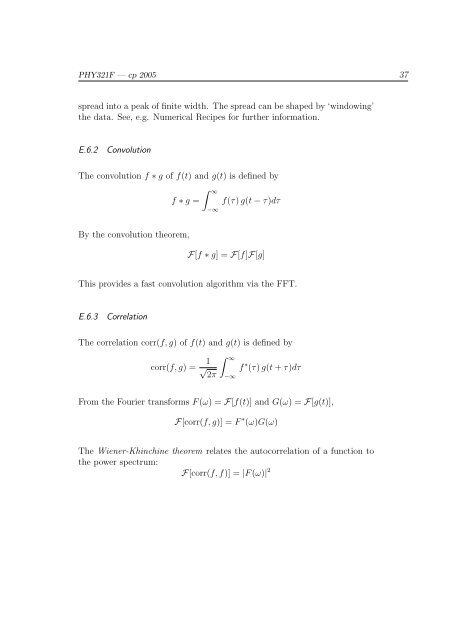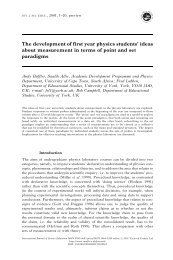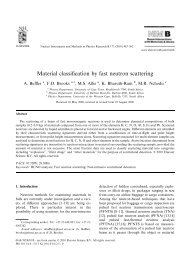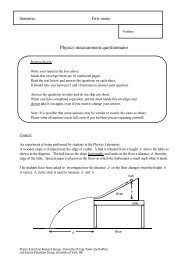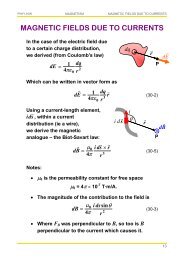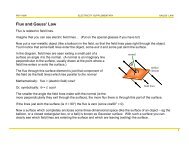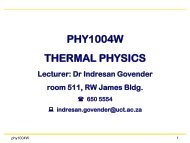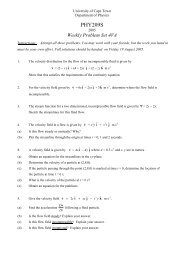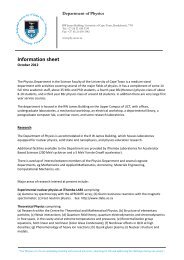Create successful ePaper yourself
Turn your PDF publications into a flip-book with our unique Google optimized e-Paper software.
PHY321F — cp 2005 37<br />
spread into a peak of finite width. <strong>The</strong> spread can be shaped by ‘windowing’<br />
the data. See, e.g. Numerical Recipes for further information.<br />
E.6.2<br />
Convolution<br />
<strong>The</strong> convolution f ∗ g of f(t) and g(t) is defined by<br />
f ∗ g =<br />
∫ ∞<br />
−∞<br />
f(τ) g(t − τ)dτ<br />
By the convolution theorem,<br />
F[f ∗ g] = F[f]F[g]<br />
This provides a fast convolution algorithm via the FFT.<br />
E.6.3<br />
Correlation<br />
<strong>The</strong> correlation corr(f, g) of f(t) and g(t) is defined by<br />
corr(f, g) = 1 √<br />
2π<br />
∫ ∞<br />
−∞<br />
f ∗ (τ) g(t + τ)dτ<br />
From the Fourier transforms F (ω) = F[f(t)] and G(ω) = F[g(t)],<br />
F[corr(f, g)] = F ∗ (ω)G(ω)<br />
<strong>The</strong> Wiener-Khinchine theorem relates the autocorrelation of a function to<br />
the power spectrum:<br />
F[corr(f, f)] = |F (ω)| 2


